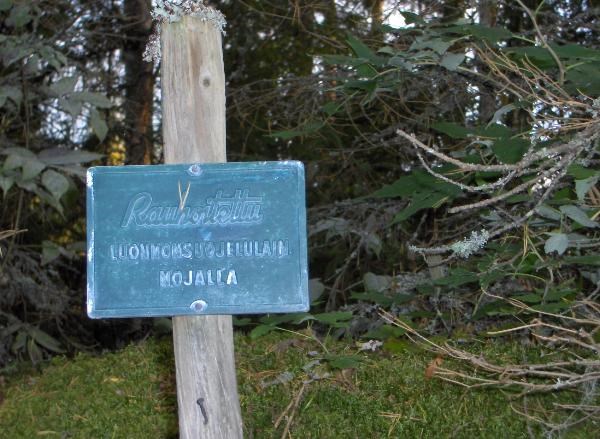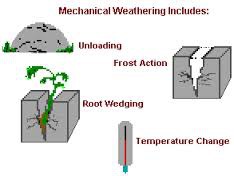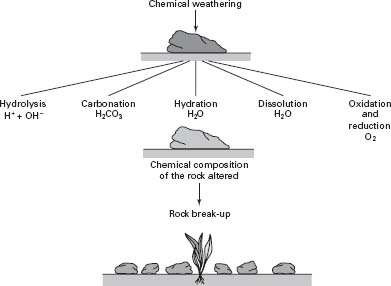Uunikiven Tafoni, Pälkäne / vers. II EarthCache
Uunikiven Tafoni, Pälkäne / vers. II
-
Difficulty:
-

-
Terrain:
-

Size:  (other)
(other)
Please note Use of geocaching.com services is subject to the terms and conditions
in our disclaimer.
(FIN) Earthcache joka esittelee kiveen muodostuneen tafonin Pälkäneellä
(ENG) Earthcache that introduces geological formation called tafoni at Pälkäne
 tämä on Earthcache eli Geokohde joten et löydä paikalta kätkölaatikkoa tai logikirjaa tähän kätköön liittyen. Tällä Geokohteella käynti osoitetaan suorittamalla kätkökuvauksessa kerrotut tehtävät. Geokohteeseen kuuluu oleellisena osana kohteen geologiaan liittyvä opetuksellisuus.
tämä on Earthcache eli Geokohde joten et löydä paikalta kätkölaatikkoa tai logikirjaa tähän kätköön liittyen. Tällä Geokohteella käynti osoitetaan suorittamalla kätkökuvauksessa kerrotut tehtävät. Geokohteeseen kuuluu oleellisena osana kohteen geologiaan liittyvä opetuksellisuus.
 This is an Earthcache so you won't find any items, box, physical cache or logbook at this site. you can log you visit by doing given tasks. Each EarthCache provides educational notes about current place geology.
This is an Earthcache so you won't find any items, box, physical cache or logbook at this site. you can log you visit by doing given tasks. Each EarthCache provides educational notes about current place geology.
 Uunikiven Tafoni, Pälkäne
Uunikiven Tafoni, Pälkäne

(photo: hikerbiker...)
 Uunikiven Tafoni, Pälkäne
Uunikiven Tafoni, Pälkäne
(skip to English section.)
(Paikalla on sijainnut Earthcache vuosina 2005 - 2006)
Tafoni
Tafonit ovat kiven kylkeen muodostuneita rapautumisonkaloita. Ne ovat aluksi pieniä halkeamia tai koloja kivessä mutta voivat suotuisissa oloissa kasvaa jopa pienen huoneen kokoiseksi jos rapautuvaa kalliota tai kiveä riittää. Ennen jääkautta Suomea peitti rapakalliokerros, jonka alaosassa olevien rakojen kylkiin syntyi rapautumistaskuja. Jääkaudella taskut olivat jäässä, ja jään sulaessa vesi huuhtoi taskut puhtaiksi jättäen kiviin tyhjiä koloja eli tafoneita. Rapautumista esiintyy sekä mekaanisena että kemiallisena (katso piirrokset). Mekaaniseen rapautumiseen liittyy kiven suora kosketus ilmakehän ja ympäristön vallitseviin olosuhteisiin, kuten lämpöön, veteen, jäähän ja paineeseen. Usein kiven pintaan tiivistyy ilmasta kosteutta vedeksi, jota työntyy kiven rakoihin missä se jäätyy ja murtaa kiveä koska jää vaatii vettä suuremman tilan. Rapautumisen jatkuessa onkalon seinämien kivi edelleen sorautuu tai hilseilee. Tässä ns. fysikaalisessa rapautumisessa aine ei muutu toiseksi, mutta kemiallisessa muuttuu. Jään aiheuttama rapautuminen on siis fysikaalista, mutta tafonit voivat rapautuvat myös siten, että vesi reagoi kemiallisesti joidenkin kivimineraalien kanssa murentaen kiveä. Tällöin muodostuneen tafonin pinta on yleensä tasaisempi ja aaltomaisempi kuin fysikaalisesti rapautuneessa.
"Tafoni on tullut suomen kieleen italiasta, jossa tafone tarkoittaa ontoksi kovertunutta lohkaretta. Eksoottinen nimi sopiikin hyvin, koska tafonia ympäröi salaperäisyyden verho; monet tafonit ovat saaneet synkkiä nimiä kuten pirunkivi tai pirunuuni. Kummalliset kolot ovat antaneet aihetta tarinoihin ja uskomuksiin, ja tafoneita on käytetty myös uhripaikkoina. Muinaissuomalaiset veivät onkaloiden uumeniin viljaa, leipää, lihaa ja muuta ruokaa pitääkseen jumalansa suosiollisina. Suomesta on löydetty noin 300 tafonia 50 paikasta eri puolilta maata. Suurin on Inarin Karhunpesäkivessä, ja sen läpimitta on reilut pari metriä. Eniten tafoneita on Länsi-Lapissa sekä Salpausselän ja linjan Pori–Nurmes välisellä alueella. Tampereen lähettyvillä ja keskisessä Savossa on oikeat tafonirykelmät. Tafonit eivät vaadi syntyäkseen mitään tiettyä kivilajia. Niitä tunnetaan joka puolelta maailmaa, Etelämantereelta asti. Muun muassa Sardiniassa tafoneita käytetään karjasuojina, ja onpa eräässä tafonissa toiminut juustolakin." Suoran lainauksen lähde: Http://Vanha.suomenluonto.fi
Uunikivi niminen kivi sijaitsee Myttäälän kylässä tiheässä kuusimetsässä. Kivessä on yksi eteläisen Suomen suurimmista Tafoneista. Tafonia on perimätiedon mukaan käytetty leipäuunina isonvihan (1700–1721) aikana. Kiven päälle on hakattu tafonin lisäksi istuinsijoja kiveä kovertamalla. Paikalla on ehkä ollut myös sauna, jonka kiukaana uunikivi on toiminut. Argeologisten tutkimusten perusteella uunikiven luona on todennäköisesti ollut myös kyläläisten piilopirtti. Kiven ympäristössä on kuoppia, jotka vaikuttavat ihmisen kaivamilta. Kansa kutsuu niitä naurishaudoiksi. Kivi sijaitsee keskellä metsää mutta on tänäkin päivänä kyläläisten tiedossa.
muita lähteitä:
wikipedia.org
www.kostia.fi
 Jotta voit merkitä logatuksi tämän kätkön sinun
Jotta voit merkitä logatuksi tämän kätkön sinun
täytyy suorittaa seuraavat tehtävät annetuissa koordinaateissa tutkimalla kivessä olevaa Tafonia.:
1 )
Perustuen siihen mitä näet paikalla, kerro kuinka Tafoni eroaa esimerkiksi syntytapansa ja muotonsa puolesta toisesta vastaavantapaisesta muodostumasta eli ns. hiidenkirnusta? Mistä nämä erot johtuvat?
2 )
Minkälaiseen kiveen tämä tafoni on muodostunut? Onko tämä tafoni mielestäsi muodostunut fysikaalisen vai kemiallisen rapautumisen vaikutuksesta? Jatkuuko tafonin muodostuminen mielestäsi vieläkin? mihin perustat näkemyksesi?
3 )
Mittaa tämän kyseisen tafonin leveys, korkeus ja syvyys.
4 )
Lähetä vastauksesi kätkön omistajalle vaikkapa tällä viestilinkillä tai sivun yläreunan viestikeskus linkin kautta.
Sinun ei tarvitse odottaa kirjauslupaa, mutta asiattomat kirjaukset tullaan poistamaan. Omistaja vastaa jollain aikavälillä viestiin, jos vastauksissa on epäselvää.
5 )
Toivottavaa on myös että otat valokuvan itsestäsi ja/tai gps laitteestasi uunikiven tafonilla ja liität sen kirjaukseesi (älä lähetä kuvaa kätkön omistajan sähköpostiin).
 Uunikivi Tafone, Pälkäne
Uunikivi Tafone, Pälkäne
Tafoni
Tafoni are small cave-like features found in granular rocks. They are born because of the phenomenon called weathering. They are initially small cracks or holes in the stone, but may under favorable conditions grow up to the size of a small room. During the Ice Age Finnish bedrock was covered by ice. Ice was left in pockets of bedrock and when the ice melted and the water was washed away it left behind empty holes in the rocks. They often occur in groups that can riddle a hillside, cliff, or other rock formations. There exists two important classifications of weathering processes called physical and chemical weathering (look at drawings). Mechanical or physical weathering involves the breakdown of rocks through direct contact with atmospheric conditions, such as heat, water, ice and pressure. Ice needs more space than water and when water freeses in pockets of stone it can break stone. Chemical weathering involves the direct effect of atmospheric chemicals in the breakdown of rocks. In Physical weathering the surface of rock often flakes and is rough while chemical weathering leaves smoother and corrugated surfaces.
In Finland there has been identified about 300 tafoni formations from 50 places all over the country. Many tafoni has dismal names such as stone of damn or damn oven. Strange holes have risen legends and beliefs, and tafoni has also often been used as places of sacrifice. The ancient Finns took offerings suchs as cereal, bread, meat and other food to these places to keep gods favorable to them. The largest finnish tafoni is the Inari Karhunpesä-stone, and it has a diameter of over two meters. Most tafoni are found in western Lapland and Salpausselkä. Nearby city of Tampere and at central-Savo there are also clusters of tafoni formations. The birth of Tafoni does not require any particular specie of stone.
translated from source: Http://Vanha.suomenluonto.fi
"Tafoni features have been found across the Earth, with dramatic forms found in the Jodhpur-Ajmer section of India's Thar Desert, Petra, Jordan, Coastal California and Australia, and even in the Arctic regions, and Antarctica. The etymology of the word "tafoni" is unclear. Tafoni may come from the Greek word taphos, "tomb", or it may stem from a Corsican or Sicilian word for "holes", taffoni, or from tafonare meaning "to perforate". The earliest known publication of the term “tafoni” was in 1882. Conventionally, the word 'tafoni' is the plural form of 'tafone'"
direct source: Wikipedia.org
Stone called Uunikivi is located near Myttäälä village, Pälkäne. There is one of the biggest tafones in southern Finland in that stone. During old finnish war called "Isoviha" (1700–1721) villagers used to be hiding near the stone and used tafoni as an owen, that is "uuni" in Finnish. They have also hacked seats on top of the stone. Stone might have also been used as an heater of an sauna. Today stone is located in the midlle of forest, but it is still well known among villagers.
other sources:
www.kostia.fi
 To log this cache you must do following tasks by investigating Uunikivi tafoni in given coordinates:
To log this cache you must do following tasks by investigating Uunikivi tafoni in given coordinates:
1 )
Based on what you see on the spot, tell me how tafoni differs from a quite similar formation called pothole? What explains this difference?
2 )
In what kind of stone is this tafoni formed? is this tafoni formed via physical or chemical weathering? Is tafoni formation still going on at site? On what observations are you basing your opinion?
3 )
Measure width, height and depth of this particular tafoni.
4 )
Send your answers (for example via this message link) to the cache owner.
Title your post “Uunikivi Tafoni, pälkäne”
(ps. if you enable selection "I want to send my email address along with this message" it is easier for me to reply)
You don't have to wait for a logging permission, but any incomplete logs will be deleted. Cache owner will reply something for post if there is some faults in answers.
5 )
It is hoped that you take a photo of yourself and / or your GPS device at the Uunikivi Tafoni and then paste it to you log.
Piirrokset: mekaaninen ja kemiallinen rapautuminen
Drawings: physical and chemical weathering
 -
- 
drawings:
http://home.comcast.net/~rhaberlin/mwstyg.htm
http://www.kitapi.de/products/reading-epub/product-id/3761278/title/Essential%2BSoil%2BScience.html
- Maitomies -
you can also contact cache owner via facebook:

Additional Hints
(No hints available.)